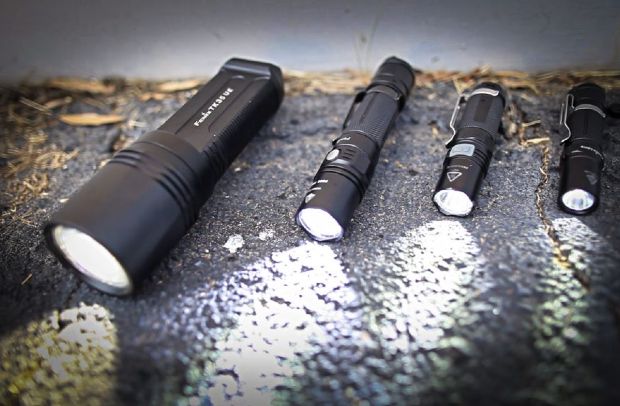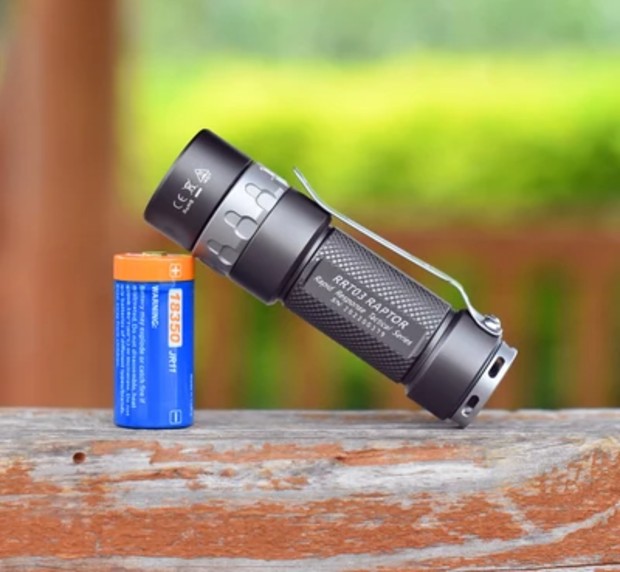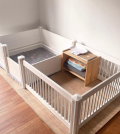What to Look for When Choosing a Torch
You can pick up a torch at the supermarket for as little as $5, but it’ll be a flimsy plastic thing that won’t last long. If you’re lucky, you’ll have batteries of similar quality included. Or, you can go for a decent torch, with rechargeable batteries, good light output, a durable build and with features that are useful on a daily basis. Sure, you’ll spend more, but having an indispensable tool at your reach is a necessity in more lines of work than you’d expect. Torches are used by police officers, hunters, carpenters, mechanics, campers, cyclists, hikers, security guards, firefighters, soldiers… the list is endless. Many of these people rely on torches in dangerous or life-threatening situations, so having the right one around is paramount. Of course, you’ll need a proper torch at home as well. Whether you’re looking for keys, finding your way around in power outages, or fixing the kitchen piping, a torch is there to help out. Here’s what you should look for in a torch that will last:

Contents
1) Size, Weight and Build
Size matters. For everyday torches, it means something small and lightweight that does not get in the way. Mini torches are small enough to be attached to key rings or fit snugly in any pocket, and they don’t skimp on any of the features of their bigger brothers.
Mid-sized torches need to be comfortable and easy to use without being too bulky. Most, like mid-range jetbeam torches, hover around 15cm in length and don’t feel awkward in the hand. Larger tactical or military torches will have longer and thicker handles for better grip, and lengths of around 25cm. Weights vary, from the extremely light keyring torches coming in at 10 grams to the largest heavy-duty torches weighing well over a kilo. Most mid-sized torches are roughly 100 to 200 grams.
How a torch is built is a key factor in price. Quality tactical torches are built of anodised airplane-grade aluminium, meaning they’re really tough. They’re shock and impact resistant, surviving falls from heights or being run over by vehicles. And since they are used in rigorous conditions, they’ll be fine in extreme temperatures, including fires. Tactical torches have the highest IPX rating, coming out unscathed from immersion in water and exposure to chemicals. All this is way more than your average supermarket torch, but you do get what you pay for.
2) Brightness and Beams
This is where the wheat is separated from the chaff. Decent torches project light from a LED setup. You can also find LEP torches that use lasers for extremely long distances. The lighting arrays differ and get more sophisticated as you go up the price range. Light output is measured in lumens. The higher the number, the brighter the torch. Entry-level tactical torches start at 300 lumens which is enough to fill a room and suitable for most general usage. The most expensive torches are capable of reaching a blinding brightness of over 3000 lumens that covers a distance of well over a kilometre. The first are often used by campers and hikers, the latter are preferred in law enforcement and hunting.
Most torches have adjustable brightness settings, so you don’t quickly drain the battery. How the light is projected is also a selling point. Spot beams are focused, narrow beams that reach longer distances. There are also flood beams that light up a wider area but at shorter distances. Typical examples of spot beams are in cycling and search and rescue, and flood beams are for camping, DIY projects and general maintenance. How the reflecting lenses are arranged in the torch head and the applied coatings determine whether the beam is a flood or spot beam. High-end models may feature both types of beams.

3) Batteries
Smaller, cheaper torches use standard disposable AA or AAA batteries. Mid-range and high-end models move up a notch and incorporate rechargeable Li-ion batteries in varying output. Charging is either through standard chargers or USB-C charging slots in the torch housing. This is good for torches that are used for longer periods in a single bout or where the highest brightness setting is needed. Some torches have batteries similar to newer phones, that is they cannot be removed and are charged through USB or a mains charger. Better to steer clear from these.
4) Features
Numerous features will also up the price. Many tactical jetbeam torches have different light effects. Those used in self-defence and by the police have a strobe function to emit quick, strong flashes of blinding light. Some also have a beacon function to send intense light over intervals of several seconds much like a lighthouse. These torches are used by hikers, and by search and rescue teams. Also, the light can be adjusted in colour temperature, emitting a warmer or cooler bluish light.
Powering on is either done by a side or tail-mounted switch. Magnets in the tail allow torches to attach to metal surfaces. Rotary dials in the light head allow you to quickly change the level of brightness and colour temperature. Police and military torches may also have serrated caps attached to the front.
Buying Torches
Depending on your needs and where you’ll be using the torch, prices for compact and tactical Jetbeam and other specialised torch brands vary significantly. Decent torches for use around the campsite or general repairs at home or work are around $100. They’ll have all you need in a torch for years to come. You can spend a bit more, and go for high-end torches with better brightness, more adjustability, and features that you may need in your line of work. Torches are sold both online and in retail stores selling camping and military gear.






